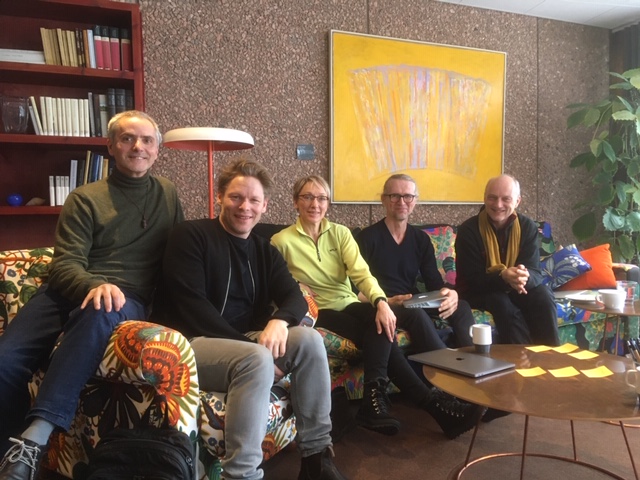How to educate artists for an unknown future?
Nordic Choreographic Platform (NCP) meeting #2 Educating Artists – Pedagogy of Choreography in the MA level seminar

Written by Kirsi Monni
Nordic Choreographic Platform is a network between four national academies and art universities from Helsinki, Copenhagen, Oslo and Stockholm to enable a broader learning environment, peer support and research in the field of choreography education at the MA level. NCP meeting #2 was hosted by Theatre Academy in Helsinki in the beginning of February 2020.
During this second meeting of the platform, the choreography students from Oslo (KHIO) participated in a joint workshop with choreography and dance performance students, taught by Veli Lehtovaara and Professor of Dance Performance Eeva Muilu. Meanwhile the programme leaders and lecturers of the participating choreography programs were having a three days pedagogical seminar with the title How to educate artists for an unknown future?
The participants of this seminar were Per Roar form the Oslo National Academy of the Arts, Rasmus Ölme and Malin Astner from the Danish National School of Performing Arts, Jeroen Fabius from the Amsterdam University of the Arts, Joao da Silva from the ArtEz University of the Arts, Arnhem and Kirsi Monni and Jana Unmüßigfrom Uniarts Helsinki’s Theatre Academy.
The seminar aimed to discuss the profiles and contexts, singular or common challenges, current trends and open questions in the context of MA choreography among all seminar participants.
Among the discussed topics were: What kind of learning environment do we want to create? What values do we want to transmit? What are the hidden imperatives? How to be aware of the ghosts? What kind of feelings, thinking, experiences does the program allow for? What are the things that we can’t speak about? What kind of subjectivities are supported or allowed in the program?
More specified topics were identified among the areas of admissions, precarity, forms of teaching, assessment and research.
A shared concern was how to create a more diverse student body within the frame of master studies and its requirements in the university and how to reflect demographic diversity when taking students in? It was noted that the intake criteria vary from a presented research plan to the assessment of previous artistic work and other assignments, but that all programmes need to follow the Dublin Descriptors of the 2nd cycle education.
From the perspective of curriculum research it was discussed in what manner the existing curricula on the one hand reflect, fulfil or depart from the anticipations and needs of the field and on the other hand focuses on the development of the discipline as embodied and discursive knowledge. In addition, there was discussion on how they succeed or seek to integrate these concerns into the supporting of the individual interest of the students and their collaboration partners.
Each program made explicit how choreography is a relational situated practice and how the precarious situation of artists and the changing needs and tools for sustainable working conditions are taken or should be taken into account in the education. Shared concerns were how one should integrate the students into the field? How much entrepreneurial input there should be? How to prepare students for coping with the critical reception, resource competition and audience reception of their work? What kind of resilience has to be trained? How to support the wish to create new and more sustainable production and working possibilities?
Last but not least topics included assessment and research. It was noted that the assessment protocol varied significantly in different programmes: from a practice of no assessment other than the graduation work, to the assessment of all courses with failed or passed, and finally to assessment of all courses with grades.
Within a perspective of last decades, the main change in dance artists education is the new role of research and the development of the discursive abilities of the artists. The future is unknown and the aesthetic criteria as well as the audiences are heterogeneous. The contexts where art is presented and where and how art operates often aims to a non-conformist output.
In this situation the pedagogy seems to have the role of guiding the student to the sources of knowledge, methods, practices and operating possibilities rather than assuring the mastering of certain aesthetics or artistic language. This means that the curricula and the educators need to be constantly alert in their contents and pedagogies and ask how art and research and their integration is understood in the artist’s pedagogy today?
Koreoblogi
Koreografian koulutusohjelman blogi on keskustelun ja jakamisen paikka. Täällä koulutusohjelman opiskelijat, henkilökunta ja vierailijat kirjoittavat koreografiasta, opiskelusta, meneillään olevista projekteista, (tanssi)taiteesta ja sen ympäriltä.
Uusimmat julkaisut
Seuraa blogia